 Web Front-end
Web Front-end
 JS Tutorial
JS Tutorial
 Development environment for installing and deploying Egret under Windows system_node.js
Development environment for installing and deploying Egret under Windows system_node.js
Development environment for installing and deploying Egret under Windows system_node.js
The software that needs to be installed is as follows:
Node.js
TypeScript
TypeScript code editor
HTTP server (optional)
Chrome (optional)
Egret
In this document, we mainly introduce the installation of Egret in Windows environment. The installation steps are as follows.
1. Install Node.js
1.1 Download Node.js
The installation method of Node.js is very simple. We can visit the Node.js official website, and then click the INSTALL button on the page to directly download the msi installation file package of Node.js.
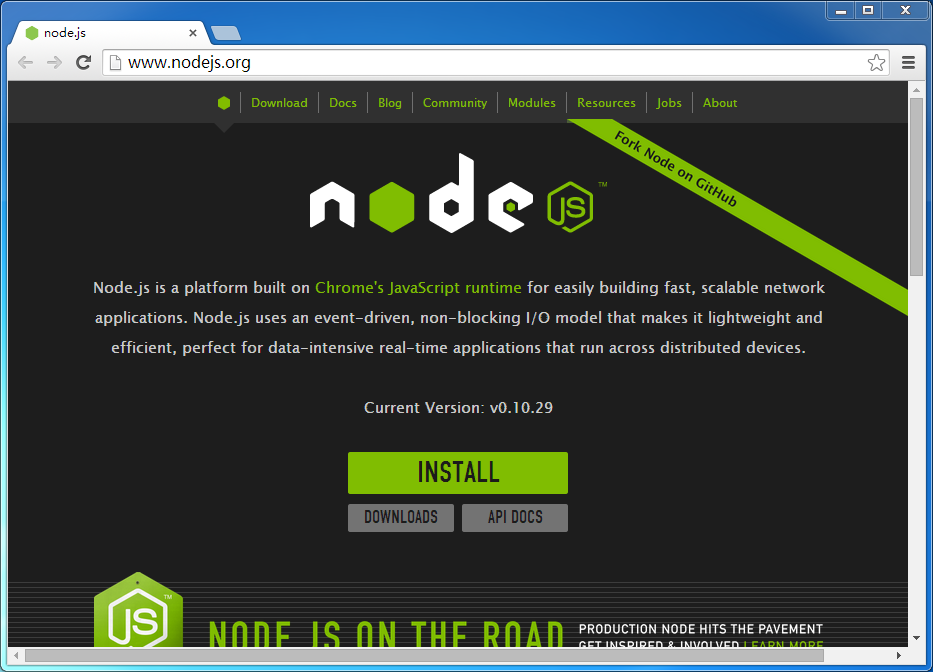
When this tutorial was written, the Node.js version was 0.10.29. If your version is higher than this version, we will provide relevant version compatibility instructions. If no version compatibility instructions are provided, it means that your version is suitable for Egret.
Double-click the msi installation package and we start installing Node.js. The installation process is as shown in the figure:
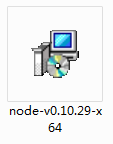
Downloaded Node.js installation package
1.2 Install Node.js
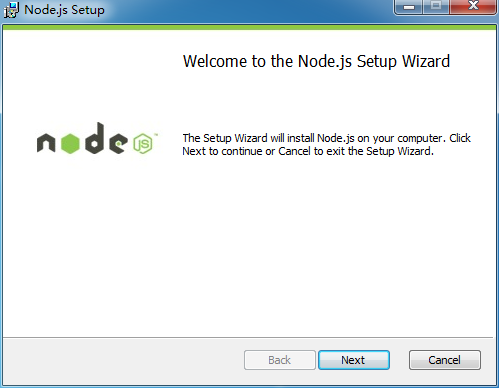
Start the installation interface
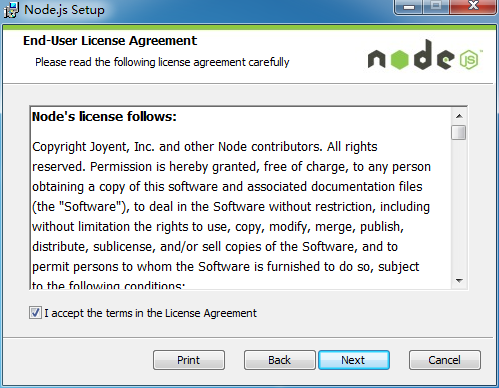
License Authorization Instructions
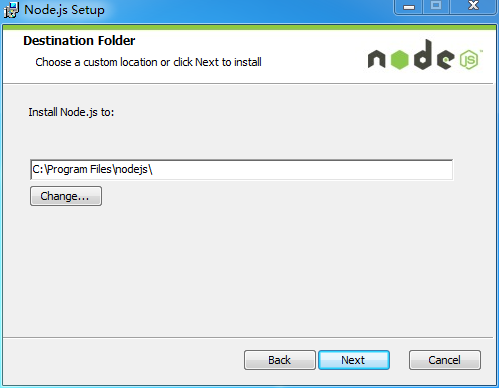
Select the installation directory, we keep the default options
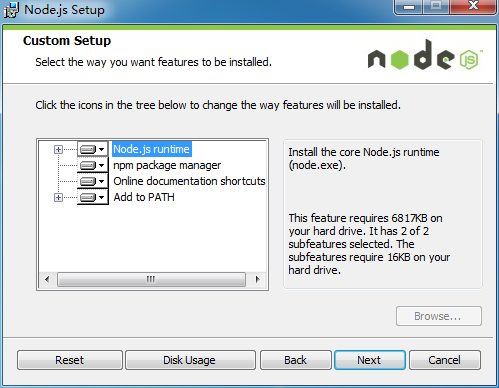
Select the installation content and we will install all tool packages
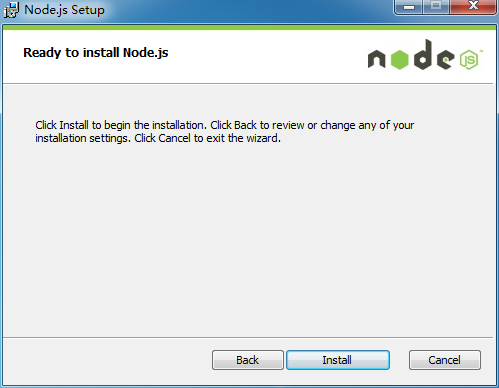
Confirm installation and click the "Install" button
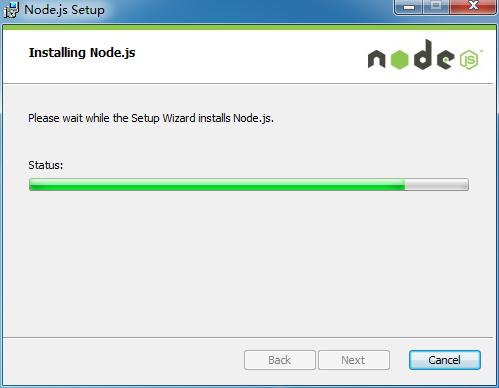
Installation process
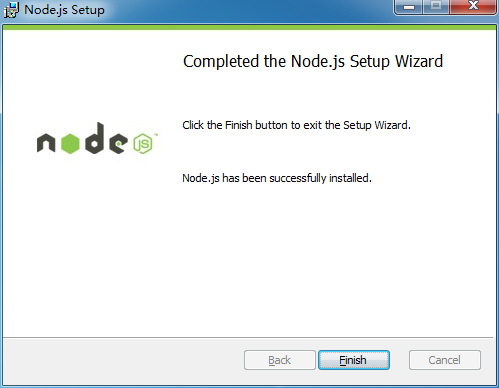
In the installation completion interface, your Node.js is installed in the C:Program Filesnodejs directory. At the same time, the installation package will also install the npm tool for you.
1.3 Verification Node.js
After the installation is complete, please start your command line tool and enter the node -v command to check your current Node.js version and verify whether your Development environment for installing and deploying Egret under Windows system_node.js is installed successfully. If installed correctly, the effect should appear as shown below.
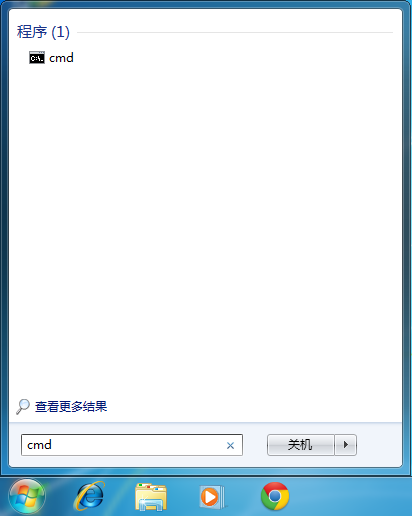
Enter cmd in Start -> Search to run the command line tool.
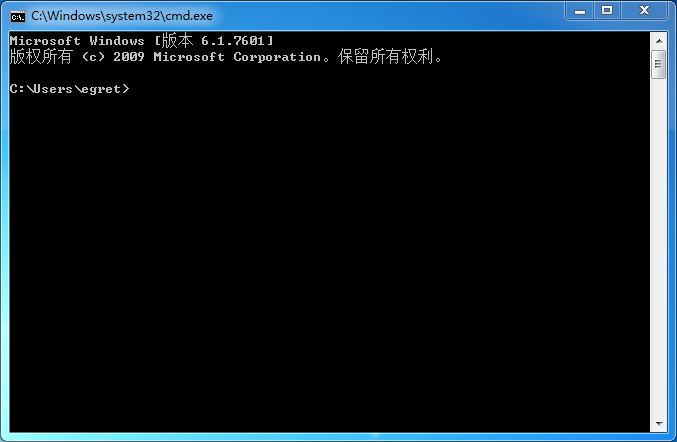
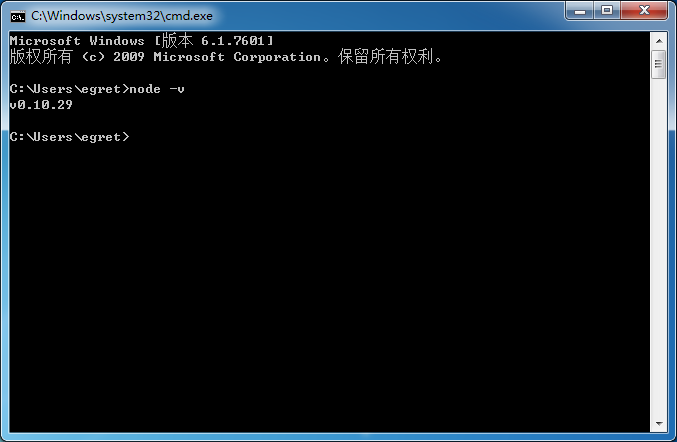
If node is not an internal or external command, nor is it an operable program or batch file, it means the installation failed. You can refer to the Node.js installation failure solution below or seek help in our developer community.
1.4 verified npm
Execute npm in the command line tool, and the following image will appear, indicating that your npm is installed correctly.

If npm is not an internal or external command, nor is it an operable program or batch file, it means the installation failed. You can refer to the Node.js installation failure solution below or seek help in our developer community.
1.5Node.js installation failure solution
After some Windows installations are completed, if you directly enter node and npm in cmd, you may be prompted that the command cannot be found. This is because the newly added Path needs to be restarted to take effect. Restart or use the absolute path of node and npm to run the command.
2. Install TypeScript
2.1 Install TypeScript
When node.js is installed successfully, the node and npm commands can be used. TypeScript can be installed directly using the npm command. For detailed installation methods, please refer to the TypeScript official website.
Enter the following command in the terminal: npm install -g typescript
The npm install command is used to install the specified Node.js library in the developer's system. typescript is the name of the library. -g means to install this library to the global path
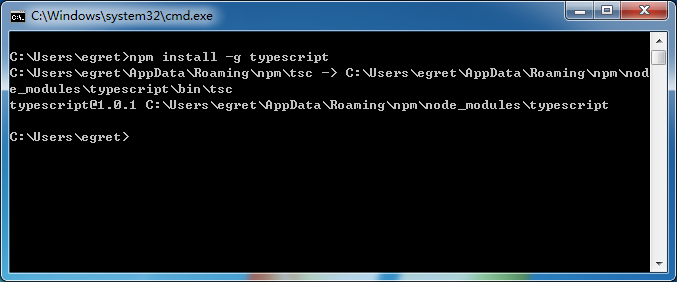
If the installation speed is very slow due to network problems, please use the npm install -g typescript --registry=http://r.cnpmjs.org command to access the domestic mirror version for installation.
2.2 Validation TypeScript
After successful installation, execute the tsc command and you should see the following interface
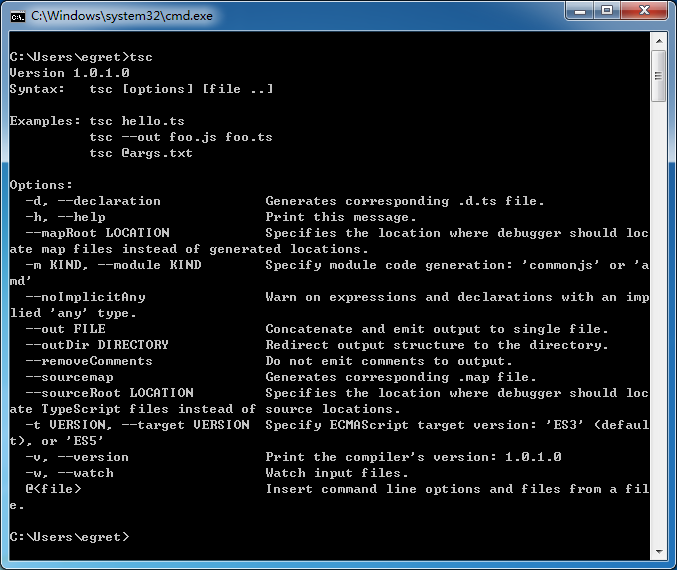
3. Install TypeScript code editor
3.1 Choose a suitable code editor
Egret can be used with any code editor that supports scripting languages, including:
WebStorm official download address [official recommendation]
Microsoft Visual Studio 2012 TypeScript Plugin
Sublime Text TypeScript plugin
For detailed editor installation methods and plug-in configuration methods, please refer to the tool-related chapters in the document.
4. Install an HTTP server
4.1 Choose a suitable HTTP server
Windows users are recommended to use XMAPP
Users can also skip this step and use Egret’s built-in simple HTTP server based on Node.js. However, in order to ensure a better development experience, Egret recommends users to install the above-mentioned more mature HTTP server
For specific server software installation, you can refer to the tool-related chapters in the document.
5. Install Chrome browser
Egret can run on most modern browsers, but Egret currently recommends developers to use Chrome as the main development and debugging environment.
Open Chrome browser
Settings->Tools->JavaScript Console
In the JavaScript console (lower right corner) Settings (gear icon) -> Common -> Disable browser cache
After the above settings are made, as long as the JavaScript console is open, there will be no browser cache, which facilitates debugging.
6. Download and install Egret
6.1 Download Egret from the official website
Egret provides two download channels, one is Egret official download, and the other is Egret Github download.
We recommend that you download it from the official website. The version here is the current stable version. If you download the development version of the engine from github, which is not a stable version, you may encounter many problems in actual development, which usually do not appear in the stable version.
We open the official download page, find the "Egret Engine" product project, click the blue download button, and download the latest version of the Egret engine, as shown in the picture.
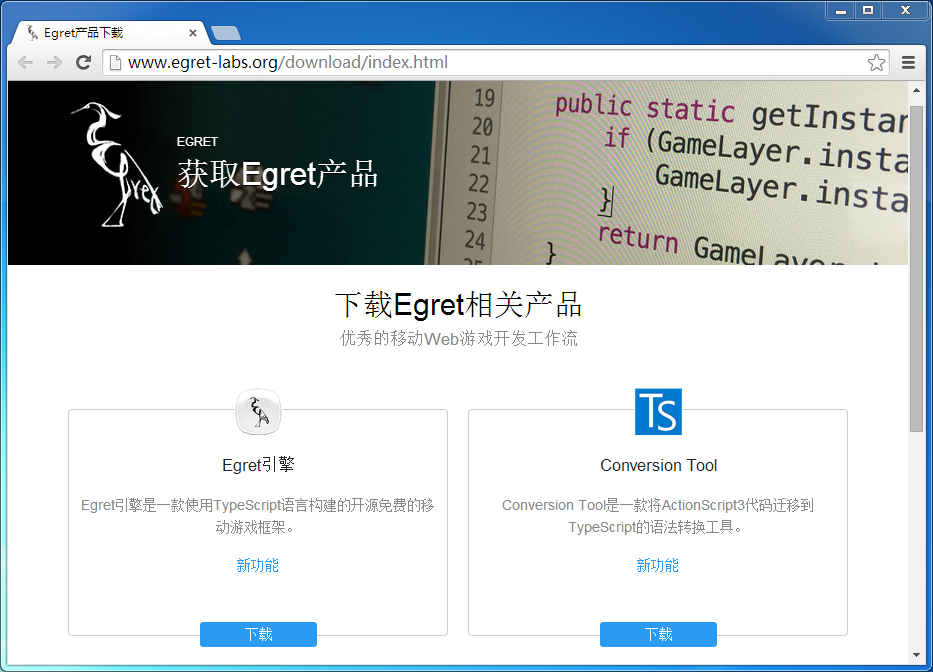
6.2 Install Egret
Extract the downloaded Egret engine compressed package to the specified directory, which can be a directory on any disk, as shown in the figure:
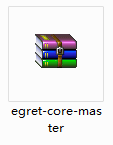
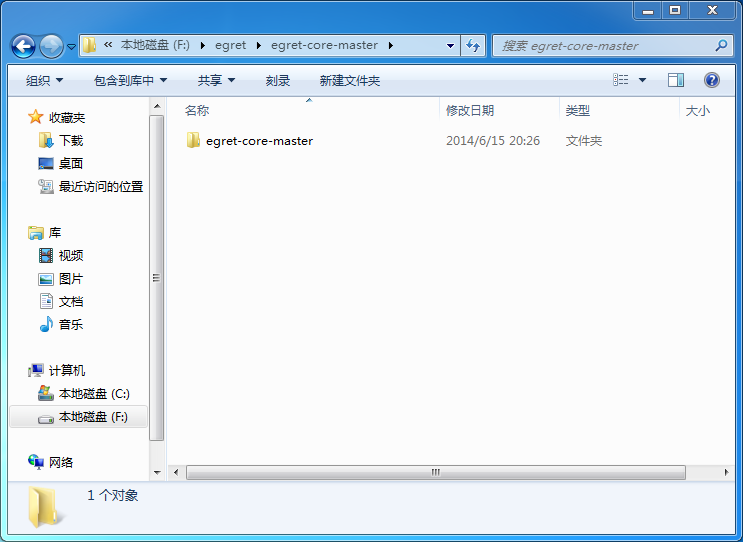
Type the command in the command line tool to enter the decompressed directory. Since we will place the decompressed files in the F: drive, we first enter the F drive and the command is as follows:
f:
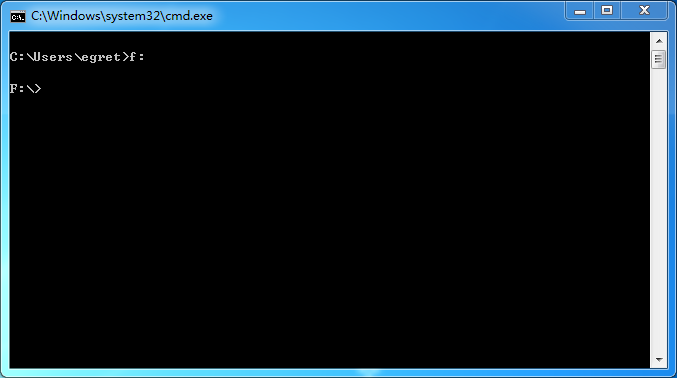
Then we enter the corresponding directory, as shown in the figure
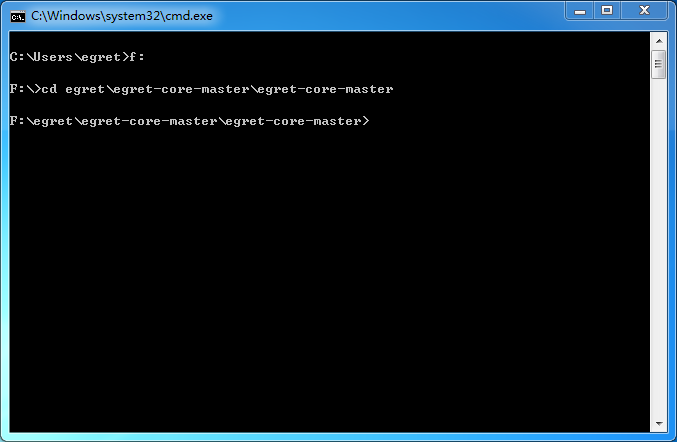
After entering this directory, we execute the installation command.
npm install -g

If the installation command is wrong, please check the following three items to see if they are correct.
Is the current path in the command correct?
Whether the current directory is the Egret directory (there is a file named package.json in this directory)
Check whether the current user of the system has administrator rights. This problem may occur if Egret is decompressed to the C drive.
6.3Egret tool verification
After the installation is completed, we execute the egret command to check whether the current Egret is successfully installed. If the installation is successful, it should appear as shown below.
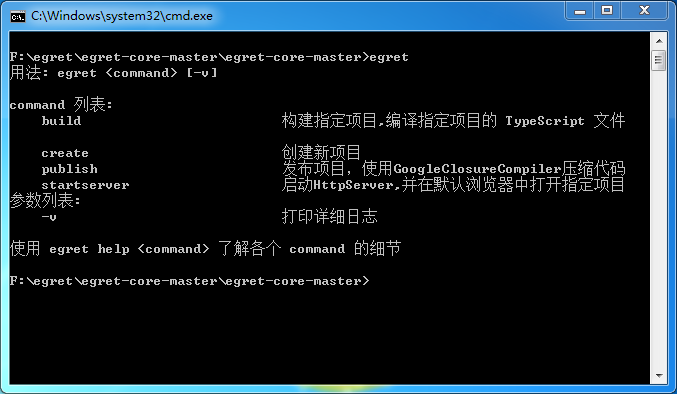
If installation fails, please seek help from our developer community.

Hot AI Tools

Undresser.AI Undress
AI-powered app for creating realistic nude photos

AI Clothes Remover
Online AI tool for removing clothes from photos.

Undress AI Tool
Undress images for free

Clothoff.io
AI clothes remover

Video Face Swap
Swap faces in any video effortlessly with our completely free AI face swap tool!

Hot Article

Hot Tools

Notepad++7.3.1
Easy-to-use and free code editor

SublimeText3 Chinese version
Chinese version, very easy to use

Zend Studio 13.0.1
Powerful PHP integrated development environment

Dreamweaver CS6
Visual web development tools

SublimeText3 Mac version
God-level code editing software (SublimeText3)

Hot Topics
 1392
1392
 52
52
 Solution to the problem that Win11 system cannot install Chinese language pack
Mar 09, 2024 am 09:48 AM
Solution to the problem that Win11 system cannot install Chinese language pack
Mar 09, 2024 am 09:48 AM
Solution to the problem that Win11 system cannot install Chinese language pack With the launch of Windows 11 system, many users began to upgrade their operating system to experience new functions and interfaces. However, some users found that they were unable to install the Chinese language pack after upgrading, which troubled their experience. In this article, we will discuss the reasons why Win11 system cannot install the Chinese language pack and provide some solutions to help users solve this problem. Cause Analysis First, let us analyze the inability of Win11 system to
 Unable to install guest additions in VirtualBox
Mar 10, 2024 am 09:34 AM
Unable to install guest additions in VirtualBox
Mar 10, 2024 am 09:34 AM
You may not be able to install guest additions to a virtual machine in OracleVirtualBox. When we click on Devices>InstallGuestAdditionsCDImage, it just throws an error as shown below: VirtualBox - Error: Unable to insert virtual disc C: Programming FilesOracleVirtualBoxVBoxGuestAdditions.iso into ubuntu machine In this post we will understand what happens when you What to do when you can't install guest additions in VirtualBox. Unable to install guest additions in VirtualBox If you can't install it in Virtua
 What should I do if Baidu Netdisk is downloaded successfully but cannot be installed?
Mar 13, 2024 pm 10:22 PM
What should I do if Baidu Netdisk is downloaded successfully but cannot be installed?
Mar 13, 2024 pm 10:22 PM
If you have successfully downloaded the installation file of Baidu Netdisk, but cannot install it normally, it may be that there is an error in the integrity of the software file or there is a problem with the residual files and registry entries. Let this site take care of it for users. Let’s introduce the analysis of the problem that Baidu Netdisk is successfully downloaded but cannot be installed. Analysis of the problem that Baidu Netdisk downloaded successfully but could not be installed 1. Check the integrity of the installation file: Make sure that the downloaded installation file is complete and not damaged. You can download it again, or try to download the installation file from another trusted source. 2. Turn off anti-virus software and firewall: Some anti-virus software or firewall programs may prevent the installation program from running properly. Try disabling or exiting the anti-virus software and firewall, then re-run the installation
 How to install Android apps on Linux?
Mar 19, 2024 am 11:15 AM
How to install Android apps on Linux?
Mar 19, 2024 am 11:15 AM
Installing Android applications on Linux has always been a concern for many users. Especially for Linux users who like to use Android applications, it is very important to master how to install Android applications on Linux systems. Although running Android applications directly on Linux is not as simple as on the Android platform, by using emulators or third-party tools, we can still happily enjoy Android applications on Linux. The following will introduce how to install Android applications on Linux systems.
 How to install creo-creo installation tutorial
Mar 04, 2024 pm 10:30 PM
How to install creo-creo installation tutorial
Mar 04, 2024 pm 10:30 PM
Many novice friends still don’t know how to install creo, so the editor below brings relevant tutorials on creo installation. Friends in need should take a look at it. I hope it can help you. 1. Open the downloaded installation package and find the License folder, as shown in the figure below: 2. Then copy it to the directory on the C drive, as shown in the figure below: 3. Double-click to enter and see if there is a license file, as shown below As shown in the picture: 4. Then copy the license file to this file, as shown in the following picture: 5. In the PROGRAMFILES file of the C drive, create a new PLC folder, as shown in the following picture: 6. Copy the license file as well Click in, as shown in the figure below: 7. Double-click the installation file of the main program. To install, check the box to install new software.
 How to install Podman on Ubuntu 24.04
Mar 22, 2024 am 11:26 AM
How to install Podman on Ubuntu 24.04
Mar 22, 2024 am 11:26 AM
If you have used Docker, you must understand daemons, containers, and their functions. A daemon is a service that runs in the background when a container is already in use in any system. Podman is a free management tool for managing and creating containers without relying on any daemon such as Docker. Therefore, it has advantages in managing containers without the need for long-term backend services. Additionally, Podman does not require root-level permissions to be used. This guide discusses in detail how to install Podman on Ubuntu24. To update the system, we first need to update the system and open the Terminal shell of Ubuntu24. During both installation and upgrade processes, we need to use the command line. a simple
 How to Install and Run the Ubuntu Notes App on Ubuntu 24.04
Mar 22, 2024 pm 04:40 PM
How to Install and Run the Ubuntu Notes App on Ubuntu 24.04
Mar 22, 2024 pm 04:40 PM
While studying in high school, some students take very clear and accurate notes, taking more notes than others in the same class. For some, note-taking is a hobby, while for others, it is a necessity when they easily forget small information about anything important. Microsoft's NTFS application is particularly useful for students who wish to save important notes beyond regular lectures. In this article, we will describe the installation of Ubuntu applications on Ubuntu24. Updating the Ubuntu System Before installing the Ubuntu installer, on Ubuntu24 we need to ensure that the newly configured system has been updated. We can use the most famous "a" in Ubuntu system
 Detailed steps to install Go language on Win7 computer
Mar 27, 2024 pm 02:00 PM
Detailed steps to install Go language on Win7 computer
Mar 27, 2024 pm 02:00 PM
Detailed steps to install Go language on Win7 computer Go (also known as Golang) is an open source programming language developed by Google. It is simple, efficient and has excellent concurrency performance. It is suitable for the development of cloud services, network applications and back-end systems. . Installing the Go language on a Win7 computer allows you to quickly get started with the language and start writing Go programs. The following will introduce in detail the steps to install the Go language on a Win7 computer, and attach specific code examples. Step 1: Download the Go language installation package and visit the Go official website



